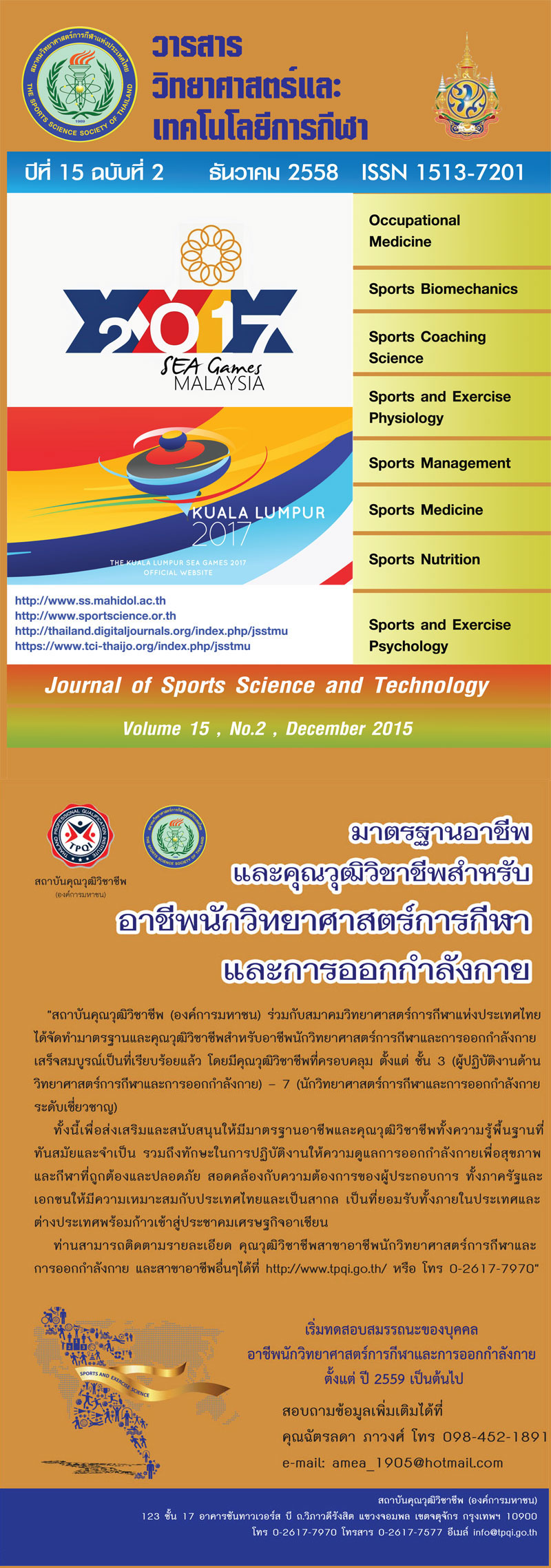THE COACHING EFFICACY OF YOUTH SPORT’S COACHES
Keywords:
Coaching Efficacy, Youth Sport’s CoachesAbstract
The purpose of the study was the coaching efficacy of youth sport’s coaches. The populations were 256 of coaches in sports school of the department of physical education, ministry of tourism and sports in the academic year of 2015 (total 11 Sports School). These were males (N = 199, 77.73%) and females (N = 57, 22.27%), which ranging in age from 22 – 62 years ( = 33.32, = 8.18). The instrument was the coaching efficacy of youth sport’s coaches, which was created and developed original form by the back translation method (Brislin, 1986)17 for the content language. Data were statistically analyzed by using percentage, mean, standard deviation, the construct validity and Cronbach’s Alpha reliability and then average of each dimension of the coaching efficacy in coaches from total 11 sports school, average of each dimension of the coaching efficacy in sports school coaches between male and female, and between experience level more than or as 5 years and experience level less than 5 years.The results are in: 1.) The coaching efficacy of youth sport’s coaches of 24 items showed the construct validity and the Cronbach’s Alpha reliability at 0.96, 2.) The average of each dimension of the coaching efficacy in coaches from total 11 sports school found that dimension of character building showed higher level of coaching efficacy and dimension of game strategy showed lower level of coaching efficacy, 3.) The average of coaching efficacy of male coaches showed higher level more than female coaches, 4.) The average of coaching efficacy of coaching experience level more than or as 5 years showed higher level more than coaching experience level less than 5 years.
(Journal of Sports Science and Technology 2015; 15(2); 331-342)
Downloads
Published
2015-12-28
How to Cite
1.
INTAPANYA T, PRACHAKUL W, PHIMPHAPHORN P. THE COACHING EFFICACY OF YOUTH SPORT’S COACHES. J Sports Sci Technol [internet]. 2015 Dec. 28 [cited 2025 Dec. 20];15(2):331-42. available from: https://he01.tci-thaijo.org/index.php/JSST/article/view/44957
Issue
Section
Research Article






